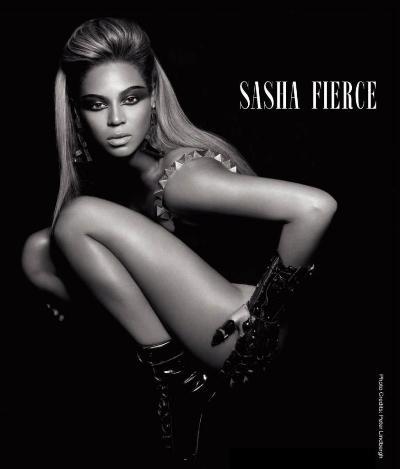Going back to Beyoncé, she realised that she needed a way to brand herself across the media. So in the process of doing so, she decided to invent an alter ego called 'Sasha fierce'. This persona tends to be the opposite of Beyoncé's loving and down to earth mannerisms. Sasha is portrayed to have an attitude and have a violent look about her. From time to time Beyoncé will switch alter egos, this gives the audience a choice with which character they would want to like more and also boost the audience range . Here is the great Beyoncé, or Sasha fierce if you will, at work being branded across the media:
(Album cover)
(Magazine cover)
(Music video- 'Put a ring on it')
As we can see from the different media appearances of Beyoncé (Sasha fierce), the branding of this persona tends to consists on long slightly dark hair, heavily dark massacre around the eyes, revealing and dark outfits and noticeable grey scale effect. All these aspects are used to brand the artist, the grey scale effect and all dark clothing will give the audience an incorporated image that will make them become more distinct and recognisable. In addition, this idea of the alter ego branding for Beyoncé corresponds with the theory of Laura Mulvey discussing the ways artists represent themselves. In this case, Beyoncé deciding to oppose from her kind and innocent nature and spawn a character of darkness, aggression and bad behaviour- something that is not commonly seen with Beyoncé. She represented herself as being a rebellious and outrageous character.



No comments:
Post a Comment